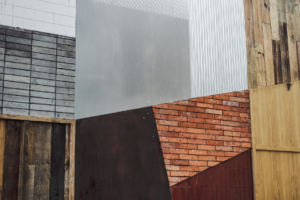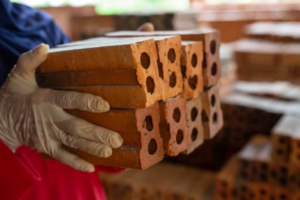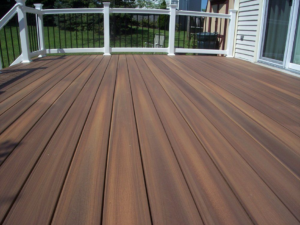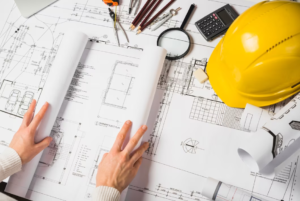Published 12/22/23
A Comprehensive Guide to Choosing Optimal Building Materials for Upgrades
Careful consideration is essential when selecting building materials for upgrades. This involves evaluating factors such as performance, durability, cost-effectiveness, environmental impact, energy efficiency, and design suitability. This thorough process guarantees the best choices that strike a balance between durability, affordability,
sustainability, and compliance with regulations. In essence, it’s about making well-informed decisions that cater to both immediate requirements and future objectives. Choosing the correct building materials is pivotal for enhancing the appearance and functionality of your home or commercial space, encompassing a wide array of options from siding and exterior finishes to different wood types.
Siding Options: Enhancing Durability and Appeal

Vinyl Siding
Vinyl siding emerges as an attractive option for homeowners on a budget, thanks to its cost-effectiveness in comparison to alternative siding choices. In addition to its affordability, this material stands out for its low maintenance requirements, demanding only occasional cleaning and thus providing homeowners with valuable time savings. Recognized for its durability, vinyl siding acts as a robust defense against pests, rot, and various weather conditions, including rain, wind, and extreme temperatures, contributing to a prolonged lifespan for the home’s exterior. Further enhancing its allure is its design versatility, offering a diverse range of color options, including dark vinyl siding colors and styles, allowing homeowners to personalize the appearance of their residences to suit their preferences.
Fiber Cement Siding
Fiber cement siding offers a compelling combination of strengths and weaknesses in the realm of home exteriors. A key advantage is found in its remarkable durability, offering protection against pests, rot, and challenging weather conditions, resulting in a resilient and easily maintained exterior over an extended period. Fiber cement siding is fire-resistant, adding an extra layer of safety to homes in fire-prone regions. Its versatility in design offers a range of textures and finishes that can mimic the appearance of traditional wood or stucco. However, installation can be labor-intensive, potentially resulting in higher upfront costs. While fiber cement siding is resistant to many environmental factors, it may still be susceptible to moisture-related issues if not installed and maintained properly. Additionally, the weight of fiber cement can increase additional structural support, making the installation process more complex. Overall, homeowners considering fiber cement siding should weigh its durability, fire resistance, and design versatility against potential installation challenges and maintenance considerations.
Wood Siding
Wood siding, known for its enduring charm and natural elegance, remains a favored choice among homeowners aiming for a timeless and classic look. Its chief asset lies in its adaptability, granting homeowners the freedom to personalize their homes with various styles and finishes. Moreover, wood, being a renewable resource, aligns seamlessly with eco-friendly principles. Nevertheless, the susceptibility of wood siding to moisture poses challenges, potentially leading to issues like rot, warping, and
insect infestations. To ensure its longevity, regular maintenance and treatments are important. Although the initial cost of wood siding may surpass some alternatives, its capacity for being painted or stained to enhance durability adds value. Yet, ongoing upkeep becomes vital to counteract the effects of weathering. Balancing its natural allure, upkeep requirements, and possible weaknesses, homeowners should carefully weigh the visual appeal and lasting effects before selecting wood siding.
Exterior Finishes: Balancing Aesthetics and Performance

Synthetic Stucco (EIFS)
Synthetic stucco, also known as Exterior Insulation and Finish System (EIFS), presents clear pros and cons when utilized in upgrades. A key strength is its exceptional insulation capabilities, enhancing energy efficiency and potentially reducing heating and cooling costs. The material’s versatility in design provides homeowners with a broad range of aesthetic choices, allowing for diverse textures and finishes. The precise application of synthetic stucco demands skilled professionals, and any lapses in installation can exacerbate moisture-related problems. While synthetic stucco provides a modern and appealing exterior, its upfront costs can be higher compared to traditional stucco or alternative siding options, requiring homeowners to weigh its aesthetic benefits against potential long-term expenses and maintenance considerations in their upgrade decisions.
Brick Veneer
Brick veneer stands out as a popular choice for upgrades, offering both distinctive strengths and considerations. One of its primary strengths lies in its timeless visual appeal, providing a classic and durable facade that enhances the overall appearance of a structure. Brick veneer is renowned for its durability and resistance to weathering, requiring minimal maintenance over time. Its robust nature also contributes to sound insulation and fire resistance, adding to the safety and comfort of a building. However, the installation cost of brick veneer can be relatively high, and the process demands skilled labor. Furthermore, the heaviness of brick veneer necessitates a sturdy foundation, potentially leading to elevated construction costs. While brick veneer offers longevity and a charming appearance, its upfront costs and specific installation requirements should be carefully considered in the decision-making process for upgrades.
Metal Cladding
Choosing metal cladding for upgrades comes with notable advantages. Its durability and low maintenance make it an appealing option, especially for areas with harsh weather conditions. Metal cladding is also fire-resistant and offers a sleek, modern look that appeals to many homeowners. However, there are downsides to consider. Metal can be prone to denting or scratching, and its initial cost might be higher than some other materials. Additionally, noise from rain or hail hitting the metal surface can be a concern for some people. Balancing its strengths with these potential drawbacks is crucial when deciding if metal cladding is the right choice for an upgrade project.
Wood Choices: Exploring Durability and Sustainability

Thermally Treated Wood
Thermally treated wood, known for its enhanced stability and resistance to decay, exhibits several strengths as a material for upgrades. Its thermal treatment process involves heating the wood to high temperatures, improving dimensional stability, and reducing its susceptibility to warping, cracking, and rotting. The treatment also renders the wood less appealing to pests, contributing to its durability. Thermal modification enhances the material’s resistance to moisture absorption and minimizes swelling and shrinking, making it particularly suitable for outdoor applications. However, thermally treated wood does come with certain weaknesses. While the treatment enhances durability, it may also alter the wood’s color, potentially affecting its appeal. The thermal treatment process can introduce a downside to wood by potentially increasing its brittleness, which, in turn, affects the overall strength of the wood. Balancing the advantages of improved stability and durability with potential changes in appearance and strength considerations is crucial when deciding on the use of thermally treated wood for upgrades.
Redwood and Cedar
Redwood and cedar stand out as popular choices for upgrades due to their unique qualities. Redwood boasts exceptional durability, natural resistance to decay and insects, and a striking, rich color that ages beautifully over time. Similarly, cedar offers remarkable durability, natural resistance to decay, and a distinct aroma. Both woods are lightweight and relatively easy to work with, facilitating installation processes. However, despite their strengths, they come with weaknesses. Redwood and cedar tend to be more expensive than other wood options, impacting their affordability. They also require periodic maintenance, such as staining or sealing, to preserve their natural beauty and protect against weathering. While Redwood and Cedar are resistant, they are not entirely immune to decay, and their longevity may vary depending on environmental factors and maintenance routines. Balancing their exceptional beauty and durability with the need for ongoing maintenance and higher initial costs is crucial when considering redwood and cedar for upgrades.
Pressure-Treated Wood
Pressure-treated wood is a popular choice for upgrades due to its distinct strengths. One notable advantage is its exceptional resistance to rot, decay, and insect infestations, making it a durable and long-lasting material. This resilience makes pressure-treated wood particularly suitable for outdoor applications, such as decks and fencing, where exposure to the elements is constant. Pressure-treated wood is also more affordable compared to alternative materials contributing to its widespread use in various construction projects. However, pressure-treated wood comes with its set of disadvantages. The chemicals used in the treatment process, including copper and arsenic compounds (though newer formulations use safer alternatives), raise environmental and health concerns. Pressure-treated wood also requires proper maintenance, including regular sealing and staining, to enhance its longevity and prevent warping or splitting. While pressure-treated wood is a cost-effective and sturdy option for upgrades, addressing environmental considerations and committing to consistent maintenance are crucial factors for homeowners to weigh in their decision-making process.
Making Informed Choices for Your Upgrade

Selecting optimal building materials for upgrades requires a careful evaluation of aesthetics, durability, and maintenance requirements. Each material possesses unique strengths and weaknesses, and the ultimate selection depends on variables such as budget, climate, and individual preferences. A comprehensive understanding of the distinct characteristics of various materials helps you to make well-informed decisions, enhancing both the longevity and visual appeal of your upgraded space. Whether you prefer the durability of fiber cement siding, the classic charm of wood siding, or the modern appeal of metal cladding, making a wise decision ensures a successful and long-lasting upgrade.
– Sam Willis
Author Bio:
Sam Willis is a freelance writer that loves sharing his knowledge and expertise in residential and commercial real estate, as well as engineering and construction. He lives in Atlanta, Georgia where he enjoys spending time with his wife and researching real estate trends in his free time. Sam’s work as a freelance writer can be found on Building Product Advisor, a construction industry resource site.
Recent Posts